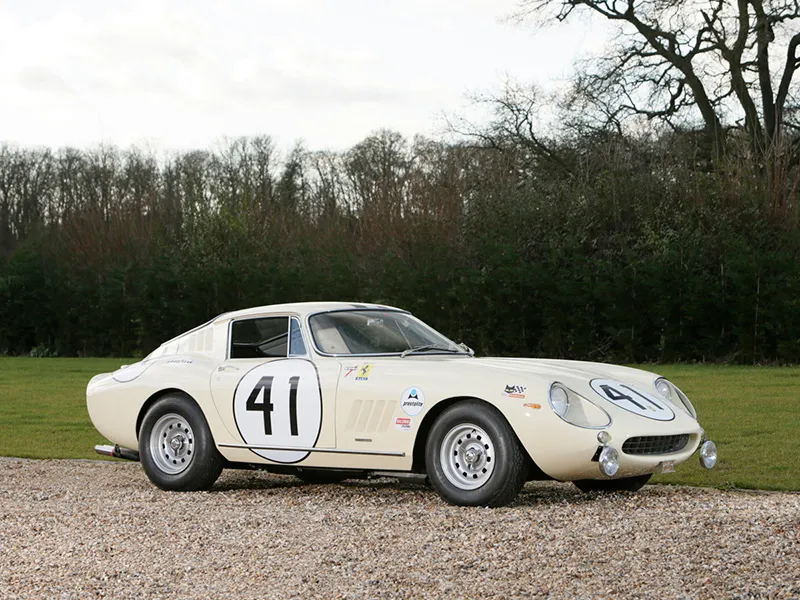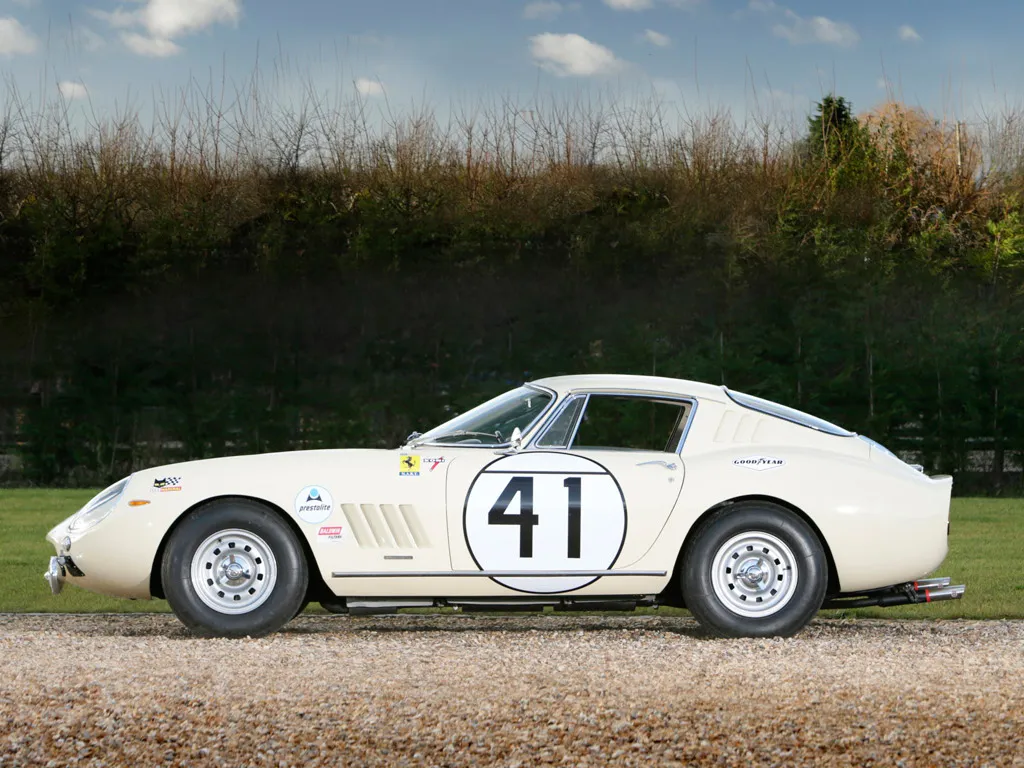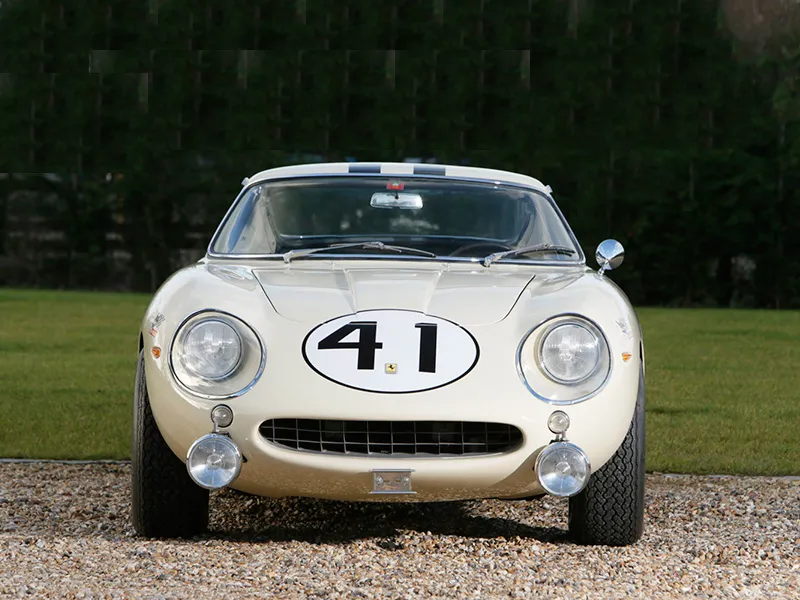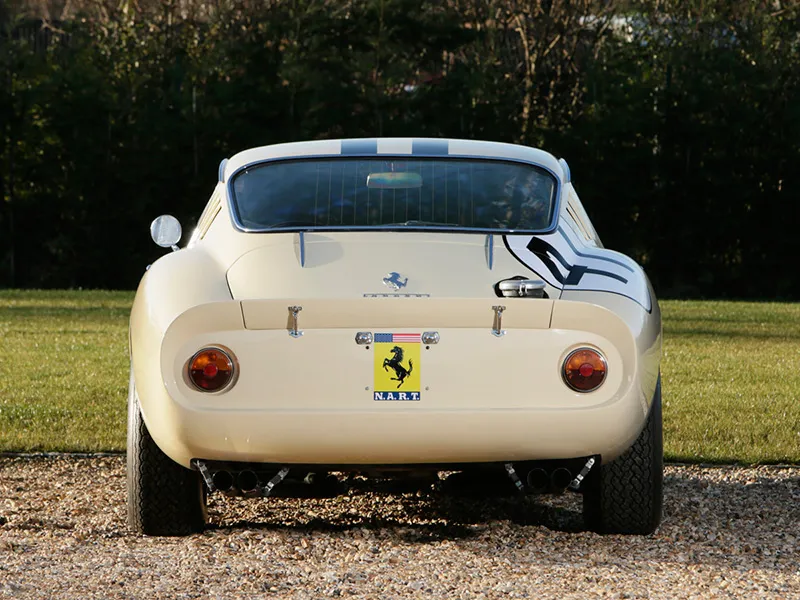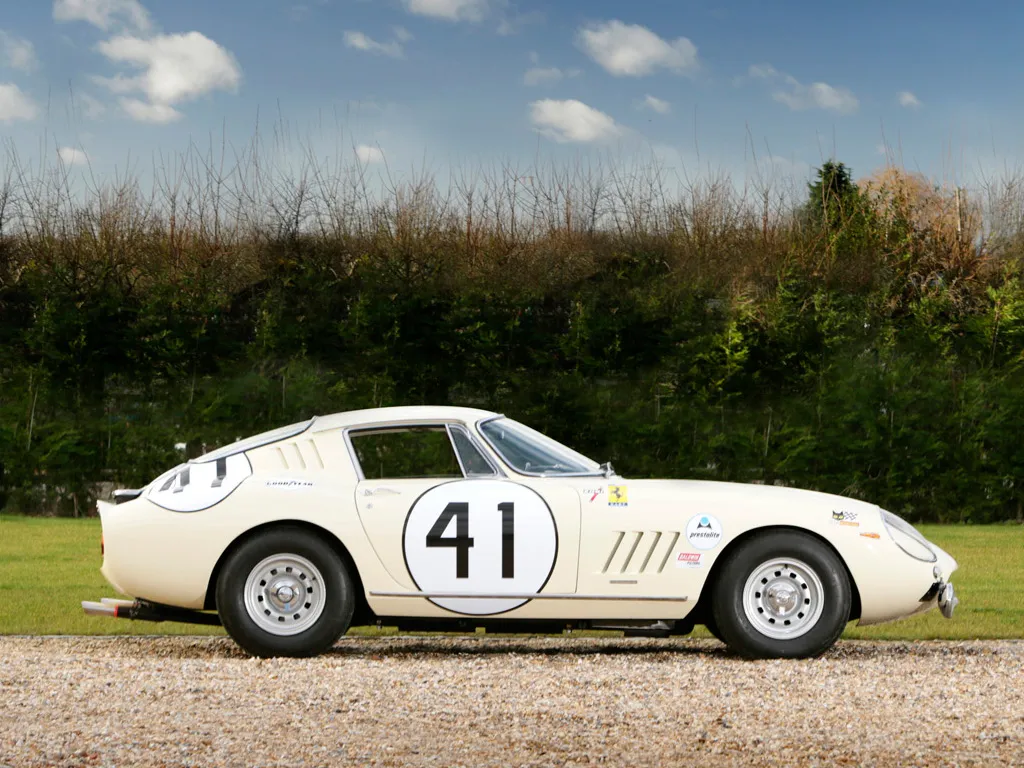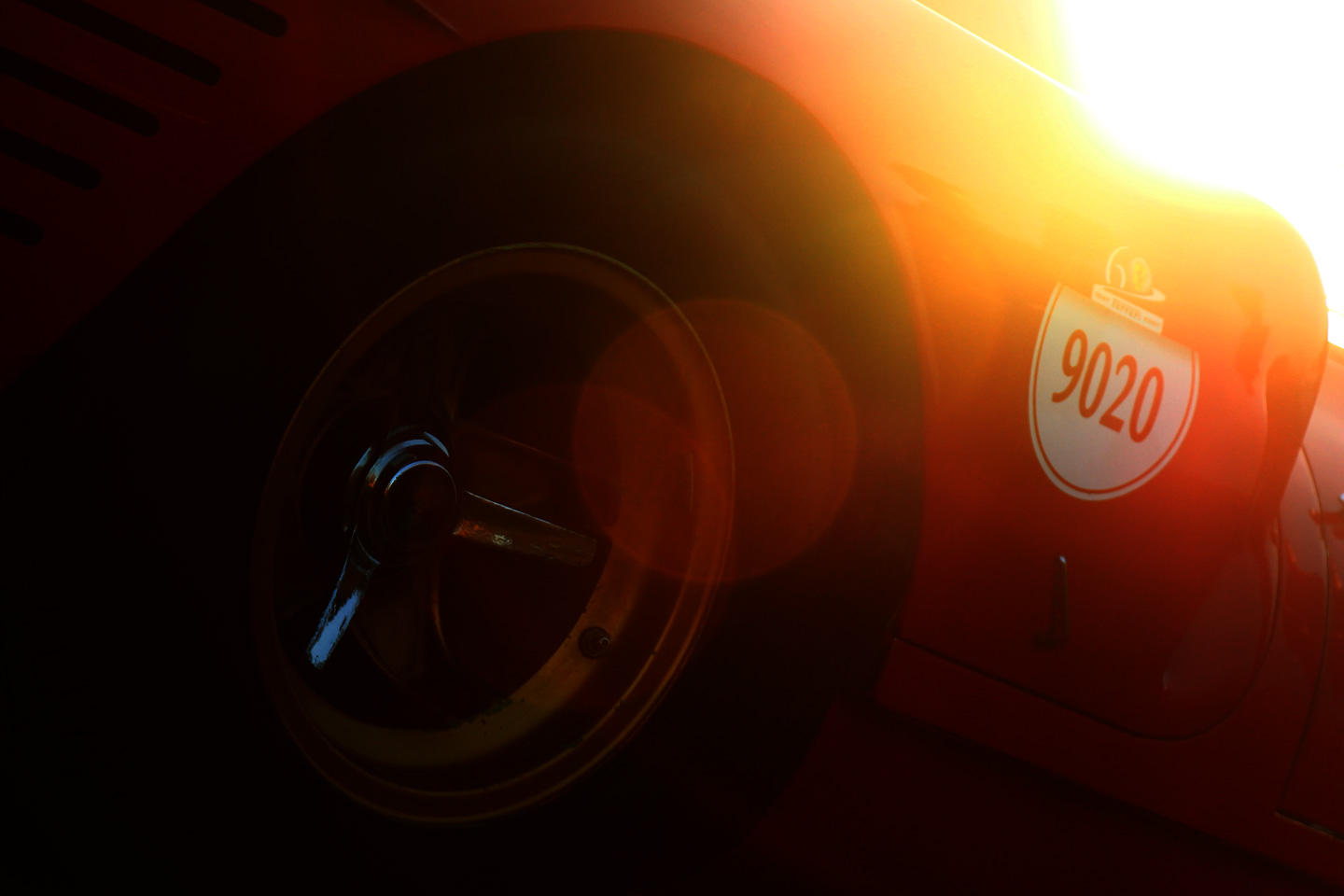
From 1964 to 1968 almost 800 iconic, beautiful 275 Berlinettas were produced. Two years after the introduction of the two cam 275, a more powerful four cam version was launched. The four cam engined cars had the later beautiful long nose body and were only visually distinct from their earlier brethren by virtue of a prominent hood bulge that made room for the 6 Weber dual throat carburetor setup made standard on the four cams. During the run of the two cams the factory produced several competition versions, since front engine sports cars were still competitive in 1964-65. By late 1966 when the four cam engine was introduced that era was effectively over, so the Ferrari factory never produced a competition 275 GTB/4. However during the Berlinetta production run alloy body versions were manufactured to special order. These light aluminum, alloy, bodies weighed about 260 pounds less than the steel bodied cars and contributed tremendously to improved performance. For the two cam Berlinettas approximately 27 alloy bodies were constructed with two gauges of aluminum used and a variety of standard and lightweight chassis, equipped with 275 engines in an amazing variety of tune that only a racing organization like Ferrari could produce. With the advent of the four cam, with about 330 produced, only 17-19 or so alloy bodies were made. These alloy cars were not an easy sell since their thin aluminum panels could be easily dented by a casual bump. Indeed one early owner of 10311 reported frequent body damage requiring repairs, like the time his lawn men bent in the trunk lid pushing the car off the grass.
Today as can be seen from market trends the alloy 275 GTB/4 are extremely desirable and command a premium over steel bodied cars. And of course competition history adds much to the desirability of any Ferrari. For all 275 GTB/4’s that were raced, performance updates and race preparation were left to the selling dealer and the client.
The first outing for 10311 under the NART banner was the 1968 Watkins Glen Six Hour race. rivers were Bob Grossman and Ronnie Bucknum, and they placed ninth overall with 240 laps completed.
The way that 10311 became prepared for competition is a fascinating story. In late 1968, Bill France of NASCAR fame, and also the promoter of the Daytona 24 hour endurance race at his own Daytona Speedway, called Chinetti Motors in to help with a problem. Ferraris were always a great draw, and looking ahead to his 1969 event, France was unsure if any were coming at all. But he wanted Ferraris there all the same and he asked it NART had anything in stock to bring down.
Dick Fritz, then heading up Chinetti’s NART (North American Racing Team) efforts came up with a solution, he arranged for Jan de Vroom, a long time supporter of NART, to trade in his new four cam, 10311, for another Ferrari, and that, simply, is how it became the official NART entry for Daytona. There wasn't much time, for preparation so according to Mr. Fritz, very little was done to it. The bumpers were removed, an outside exhaust system was installed, a roll bar was inserted, an external gas filler was built to feed the twin fuel tanks, twin Bendix electric fuel pumps and 15" x 7" Borrani wire racing wheels were fitted. Much exotic tuning was done to the engine, but Fritz maintains that the engine wasn’t taken apart; no hot cams no special pistons, no polished rods, nothing. There simply was no time.
On arriving at Daytona, there was one driver available, a certain Ricardo Rodriguez, not the Mexican Rodriguez of international fame, but a cattle rancher from South America with a passion for racing. A young Sam Posey was also without a ride, so he was hired for his first ever race in a Ferrari. Accounts are incomplete but it’s believed that the gearbox failed during the race. Since there was no spare, it was decided to try a rebuild in the pits. Fritz remembers mechanic Francois Sicard covered in oil, while an intense Sam Posey stalked the scene repeating, "Let us persevere, gentlemen; let us persevere.” Well, persevere they did. And they came home 2nd in class, 23rd overall, having lost 3 hours in the pits! This was an amazing result for this 275 GTB four cam alloy bodied car.
It was then sold and had a number of famous and not so famous owners. By 1970 the car was in Houston, painted an interesting metallic brown and owned by Dr Ron Finger, a plastic surgeon, who would go on to own many interesting Ferraris. It was maintained by Sid Simpson at his “Simpson Automobile”. Sid was an early stalwart of the Ferrari scene. Finally in 1972 the car, in somewhat rough shape was bought, with Sid’s help, by a young Doctor Frenger for $8,000. During the next two years it received new white paint, similar to its original ivory. Sid did a $1,200 valve job and that was the only mechanical attention it received. Looking back Dr Frenger in 1988 said owning 10311 was: “a remarkable experience... I have had many pleasant automotive experiences…but none to equal the thrill this car provided”
10311 is a unique car, and in many ways, a legitimate competition car with an interesting and well documented history. Its transformation to competition status was performed by the NART organization, the quintessential racing team, with a long history of preparing Ferrari race cars for International competition.
The car has Ferrari certification and has been totally restored - and is ready now to provide it's next lucky custodian with the thrilling V12 4 cam driving experience enhanced further by the super lightweight alloy body construction.
Ferrari, 275, four cam, alloy, and NART—a fabulous combination and potential entry ticket for many road or track events.
